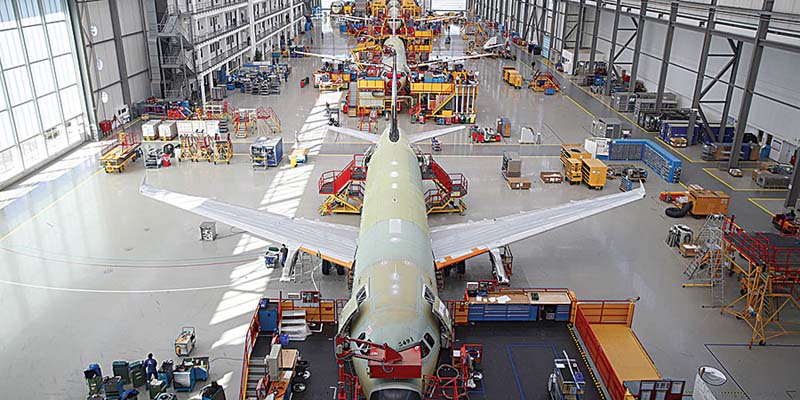Slowing passenger demand growth and the challenges facing this industry will moderate global aircraft fleet growth over the next ten years to an annual rate of 2.5%, down from a forecast of 3.4% before the outbreak of the pandemic, according to Oliver Wyman’s ‘Global Fleet & MRO Market Forecast 2021-2031’ report.
See also: Boeing continues technology work on 797.
Specifically, by 2031 the global fleet is estimated to stand at 36,570 aircraft, an annual growth rate of 2.5%, which compares to the 3.4% annual growth forecast (to more than 39,000 aircraft) that was estimated for the 2020-2030 period before the pandemic broke out and an annual growth rate of 3.2% during 2010-2020, EuropaPress reviewed.
See also: Airbus explores narrow-body aircraft design with GE.
According to the firm’s experts, the considerable financial pressure that airlines will continue to experience in the short term, their need to preserve cash and adapt to a new reality marked by lower passenger demand will lead to adjustments in the global air fleet, with the consequent impact on the aviation industry and on the business of aircraft maintenance, repair and overhaul (MRO) service providers.
“Modern commercial aviation has never before faced such a long list of challenges as those caused by Covid-19. At Oliver Wyman, we estimate that it will take years to adjust the global aircraft fleet to this new reality, and even then, we do not foresee the industry making up in the next decade all that has been lost to the pandemic,” says Tom Cooper, vice president at Oliver Wyman and lead author of the report.
In the shorter term, the firm estimates that this year the world aircraft fleet will total 23,715 units, a figure 15% lower than in January 2020 and also below the 28,800 aircraft that, a year ago, the world air fleet was expected to reach by this date.
It will not be until 2022 that the air fleet will regain its pre-COVID-19 size, thanks to the return to service of narrow-body aircraft for domestic routes, while wide-body aircraft for international flights may take two more years, until 2024, due to restrictions on cross-border travel.
Asia to lead fleet growth over the next decade
The report anticipates that world fleet growth over the next decade will be driven primarily by China, with an annual rate of increase in its aircraft fleet of 4.5% to more than 5,700 aircraft by 2031, as well as by other countries in the Asia-Pacific region (4.5%), the Middle East (2.8%) and India (with an annual growth rate of 8.7% to more than 1,500 aircraft by 2031).
Over the past few years, emerging markets in Asia have recorded the strongest fleet growth, which will eventually make that region the market leader if the pattern continues as expected. Since 2010, Asia’s share of the world fleet, including China, has grown from 22% to 31%. By 2031, Asia’s strong fleet growth is expected to increase its global share to 37%.
Eastern Europe and the Middle East have also become growth engines for the world fleet and are expected to record similar growth rates to China over the next 10 years. Much of this growth is driven by the significant number of narrow-body aircraft orders from these regions.
Related Topics
Air Canada Inaugurates its Fourth Café at Vancouver Airport
Operations Resume at Ronald Reagan Washington National Airport Following Bomb Threat to United Airlines Flight
Argentina: New Improvement Work Begins at Aeroparque Passenger Terminal
Delta Inaugurates Second-Largest Sky Club in Salt Lake City
Plataforma Informativa de Aviación Comercial con 13 años de trayectoria.
